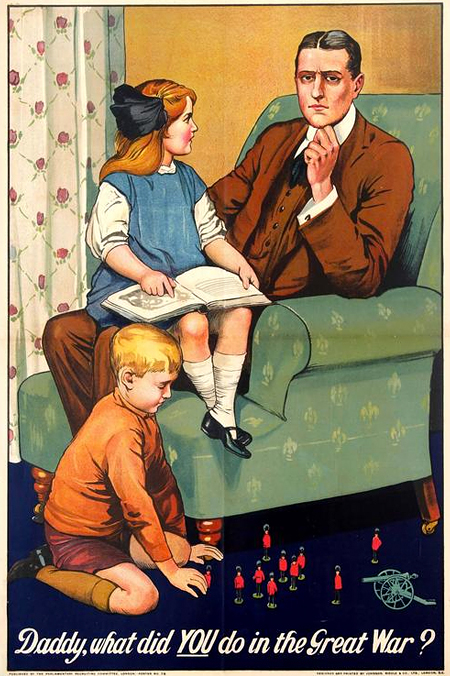
The midterm elections are days away at this writing, and, according to the latest news, Trump and his minions are running scared, speaking of a possible defeat. Make it so, please; this is our last chance. “We shall nobly save, or meanly lose, the last best hope of earth,” to quote the first, best Republican president.
In keeping with the current perilous zeitgeist, on Halloween day I headed over to Jack Fischer Gallery in Minnesota Street Projects, part of San Francisco’s Dogpatch neighborhood. Installed there is Ward Schumaker’s Trump Papers; Hoisted by His Own Petard, a particularly relevant and important show that ends—with a bang, not a whimper, we hope—on election day. Close readers of Hamlet will recognize the Shakepearean reference in the title to being blown up by one’s one bomb. Hamlet engineers the deaths of two friends who spied on him for his murderous uncle and, as we know, things do not end well for him. Trump is of course decidedly un-Shakespearean (although the gleefully wicked Richard III comes close), but with this work, one of the Bay Area’s most talented and original abstract painters delivers a ringing condemnation by simply turning Trump’s own egregious words against him. Schumaker paints them, in a variety of fonts and colors—in a brilliantly surprising palette anchored by cadmium orange—the lies, insults, brags, and threats that characterize this low era. These beguiling word paintings, with their irregularly stenciled letters that invoke Warhol’s ironic silkscreened texts, present quotations from Chairman Donald and his henchpersons : “I alone can fix it,” “I’m President and you’re not,” “The truth isn’t the truth,” and ”Bow down to President Trump.” Both stentorian and stuttering, these slurred and curiously beautiful paintings are perfectly in synch with our fake-news-based Crazytown-on-the Potomac; they also provide a refresher course in Trumpiana for those who have tuned out, or never tuned in. (If you miss the show, a similar body of work, Hate is What We Need, is also available in book form, the perfect gift for a Trumpist or anti-Trumpist endowed with a sense of humor.)
This is not a review of the Schumaker show (although it certainly merits many), so much as a reflection on art’s place in the general culture and more specifically, a contemplation of political art’s standing within the diverse universe of art endeavors. Contemporary art includes innumerable galaxies and solar systems, to continue the astronomical metaphor, serving every possible taste or aesthetic inclination. This is why it is impossible to formulate a grand unified theory of art today, as did previous cultures lacking our instant access to information. Whether past values seem dated to you or not, when we read the art criticism of two hundred, or a hundred, or even fifty years ago, a distinctly different worldview becomes readily apparent. What those cultures had and we lack was a sense of absolute values and of man’s place in the cosmos -- misguided or not, society had faith, or optimism, for lack of better terms. In Civilization, Kenneth Clark’s BBC survey of western art, he notes more than once that belief in one’s culture is crucial to creativity. (These days, we might also include a presumption that the world is not going to hell as requisite to creative work. Many artists confess to difficulty in focusing on work now. Even Ward Schumaker, with whom I talked, said he longed for ‘getting back to making art’; he dismisses this artistic confrontation with Trumpery as therapy, but I would have to call it exemplary art-making in crisis.)
Art is recent years has become overly dissociated from reality, and in its elitism and removal from the concerns of the common, may perhaps collude with global capitalism (no matter what French philosophers we invoke, reverentially). When in the 60’s Andy Warhol said that making art was just a job, it was refreshingly provocative and down-to-earth; fifty years later, we know that extremism in the defense of aesthetic freedom (to paraphrase Barry Goldwater) can degenerate into artistic sin. Art today embraces everything, but too often stands for nothing but itself.
There are, of course, many artists who focus on political issues, and I am not for a nanosecond contending that all artists need to be polemicists or propagandists. But such artists find themselves sidelined by the art world, shunted into university galleries or small art centers. Art is big business these days, and galleries and major museums for the most part are leery of alienating the patron class. When the history of this lamentable, disgraceful era is written (assuming that we survive Trump’s Déluge), how many art institutions will be able to answer—except with retrospective sanctimony—Pete Seeger’s question from the Depression years, “Which Side Are You On”? Remember the shaming military-recruitment poster from England, a century ago: “Daddy, what did YOU do in the Great War?” Stand up for your right.
